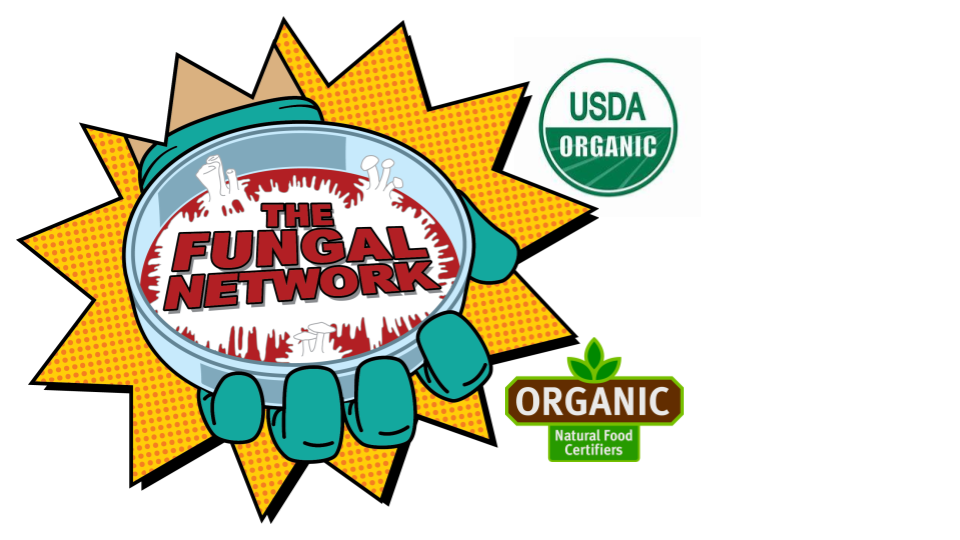Mushrooms in the Classroom

Growing mushrooms in the classroom is a great way to engage students in active learning. They grow fast, are fun to watch, require very little resources or effort, and lend themselves to endless experimentation and data collection.
Here's a little overview of the process that should explain why I say they are perfect for a classroom: you can produce a grow bag of straw on day one, watch the mycelial threads grow throughout the straw for the next 7-10 days, and have mushrooms starting to grow out of it by day 14-20. Another 3-5 days and the mushrooms are ready to pick. There are noticeable daily changes, and opportunities for data collection and teachable moments every step of the way.
To top it all off, the mushrooms themselves can be eaten, or used for making paper, or even cloned in the classroom, using simple techniques. And they'll fruit again (generally at least 2-3 fruiting events). Once they are totally done, the left over materials can be composted (another fun activity) or used for growing plants, or used to inoculate a mulch bed so you'll see mushroom growing outdoors.
Most teachers (people in general) don't really have much background in mushrooms, so here are some thoughts to get you started.

Data Collection:
Of course, like everything in the world of science, the most important thing is to begin from a place of curiosity. The main difference between play and experimentation is data collection, so start by thinking about, and encouraging your students to think about, what quantifiable information can be collected. What are the environmental conditions in the classroom? Temperature and humidity are pretty obvious and can be easily and inexpensively determined. Less obvious may be things like light levels or light/dark cycles. Once upon a time, light levels would be hard to determine, but now it's as simple as installing a free app on your phone. You can even get a free app to analyze the color of light, in case you're interested in whether mushrooms respond differently to a warm incandescent light than to a cool LED light.

Using What We Have Available To Us:
Mushrooms are decomposers. Wood-loving mushrooms, like oysters (which are the ideal classroom mushroom) naturally are found on dead trees, but can grow on lots of plant matter. In fact, they are often cultivated on what is referred to as "agricultural waste," a term which is pretty expansive, and can include material as simple as straw, coffee grounds, corn cobs, rice hulls, the pulp left over after processing sugarcane, etc. One of the most exciting things happening in mushroom cultivation right now is mostly happening in developing parts of the world, where a lot of mushroom research is focused on taking the waste from crops that are grown for export to wealthy areas and using it to grow mushrooms. There is even a further research field in taking the waste left over from growing the mushrooms and using it to improve the soil of fields for growing other crops. It's an idea called "valorization," where something that has been seen as unimportant, or even a source of problems for disposal, is recategorized as something that is useful and even desireable. How great is that?

Understanding the processes and requirements of life:
Mushrooms have a specific set of needs, like any living thing. It can be very instructive in understanding the organism to take on the job of ensuring those needs are met. For wood-loving mushrooms, the key parameters are an appropriate temperature (normal room temperature works), a certain amount of light when they are fruiting, high humidity, and fresh air. Thinking through how to provide those conditions, then making it happen is a lot of fun. Depending on the level of your students, it may be as simple as picking up a $5 humidifier at the thrift store and setting it up near your growing mushrooms or as complicated as building a custom humidifier using ultrasonic pond fogger components and writing Raspberry Pi code to monitor and automatically control the humidity within a set range. Either way the students are learning about problem solving while they learn about caring for a living thing.

Mushrooms as artistic or functional materials:
Another area where there is currently a lot going on with mushrooms is in materials science. Mushrooms can be used for making paper, in a very similar way that plant matter is used in paper making. Mushrooms are being used to grow an artificial "leather" that is soft, beautiful and functional, and the growth of fungus through it's substrate binds the substrate together leading to a field of mushrooms as structural materials. Some people are using mushrooms to produce "bricks" which can serve as a building block, and others are using mushrooms to generate eco-friendly and biodegradable packaging. Imagine creating a mold of a vase by packing sawdust around it, then letting a fungus grow through the sawdust. You can then open the sawdust mold and you'll have a perfect space inside for protecting a vase during shipment. Some mushrooms can even be used as dyes.
